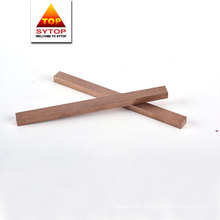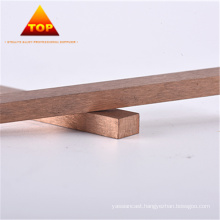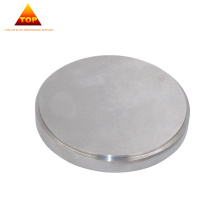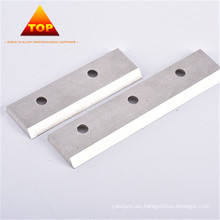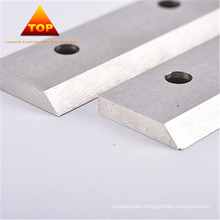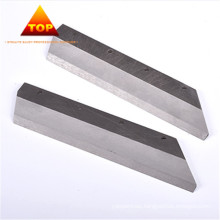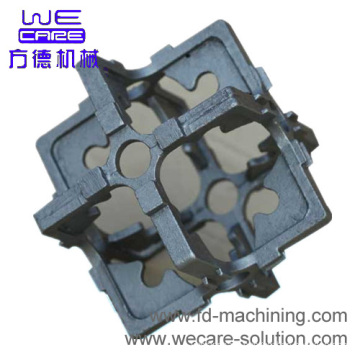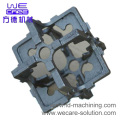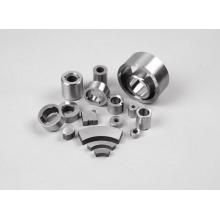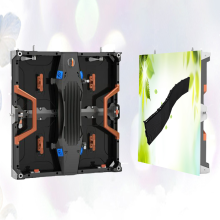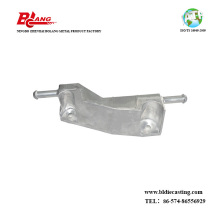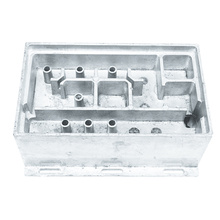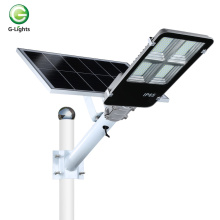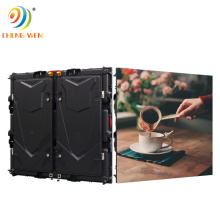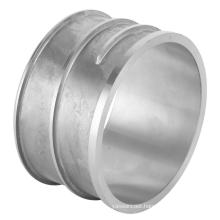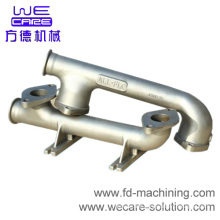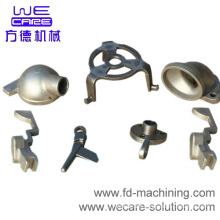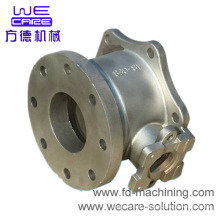Aluminium Die Casting for Lighting and Electronic Products
Basic Info
Model No.: ADC-30
Product Description
Model NO.: ADC-30 Material: Aluminium Service: OEM and ODM Weight: Ranging From 0.01 Kg to 100kg Delivery Time: 30 Days After Receiving The Payment Demoulding: Automatic Using Hardness: >HRC45 Mould Life: >1, 000, 000 shots Condition: Used Specification: AISI, ASTM, JIS, BS, DIN, ISO HS Code: 73259990 Application: Car, Hardware Certification: SGS Surface Ttreatment: Polishing, Anodising, Powder Coating etc Product Capacity: 1000000 PCS/Month Export Markets: Global Surface Treatment: Coat-Plating Average Wall Thickness: >3mm Customized: Non-Customized Trademark: wecare Origin: China ALUMINUM DIE CASTING accessory feature:
1, Process of aluminum die Casting Part: Die Casting + complete machining + heat treatment + surface treatment
2, Aluminum die casting mold Material: 8407, H13, P20, etc. Aluminum die casting mold Life: >1, 000, 000 times, Aluminum die casting mold Design: According to Drawing or Sample.
3, Aluminum die casting accessory material: Aluminum Alloy A380 or as customer's requirement.
4, Surface Treatment of aluminum die casting part: Chrome plating, sandblasting, painting, anodizing, powder coating, electrophoresis
5, Standard exporting package for aluminum die casting part, such as plywood box, plywood pallet, carton & bubble bags
6, Application range of aluminum die casting parts: Auto Parts , Motorcycle Parts, pump parts, locomotive parts, Machinery parts, lamp chimney
7, Certificate of aluminum die casting: ISO 9001: 2000 standard
Die-casting is similar to permanent Mold Casting except that the metal is injected into the mold under high pressure of 10-210Mpa (1, 450-30, 500) psi. This results in a more uniform part, generally good surface finish and good dimensional accuracy, as good as 0.2 % of casting dimension. For many parts, post-machining can be totally eliminated, or very light machining may be required to bring dimensions to size.
Die-casting can be done using a cold chamber or hot chamber process.
In a cold chamber process, the molten metal is ladled into the cold chamber for each shot. There is less time exposure of the melt to the plunger walls or the plunger. This is particularly useful for metals such as Aluminum, and Copper (and its alloys) that alloy easily with Iron at the higher temperatures.
In a hot chamber process the pressure chamber is connected to the die cavity is immersed permanently in the molten metal. The inlet port of the pressurizing cylinder is uncovered as the plunger moves to the open (unpressurized) position. This allows a new charge of molten metal to fill the cavity and thus can fill the cavity faster than the cold chamber process. The hot chamber process is used for metals of low melting point and high fluidity such as tin, zinc, and lead that tend not to alloy easily with steel at their melt temperatures.
Die casting molds (called dies in the industry) tend to be expensive as they are made from hardened steel-also the cycle time for building these tend to be long. Also the stronger and harder metals such as iron and steel cannot be die-cast
Common Alloys in Die Casting
Aluminum, Zinc and Copper alloys are the materials predominantly used in die-casting. On the other hand, pure Aluminum is rarely cast due to high shrinkage, and susceptibility to hot cracking. It is alloyed with Silicon, which increases melt fluidity, reduces machinability. Copper is another alloying element, which increases hardness, reduces ductility, and reduces corrosion resistance
Die- Castings are typically limited from 20 kg (55 lb) max. For Magnesium, to 35 kg (77 lb) max. For Zinc. Large castings tend to have greater porosity problems, due to entrapped air, and the melt solidifying before it gets to the furthest extremities of the die-cast cavity. The porosity problem can be somewhat overcome by vacuum die casting
From a design point of view, it is best to design parts with uniform wall thicknesses and cores of simple shapes. Heavy sections cause cooling problems, trapped gases causing porosity. All corners should be radiused generously to avoid stress concentration. Draft allowance should be provided to all for releasing the parts-these are typically 0.25° To 0.75° Per side depending on the material.
Contact us if you need more details on Spare Parts . We are ready to answer your questions on packaging, logistics, certification or any other aspects about Hardware Castings、Machined Forgings. If these products fail to match your need, please contact us and we would like to provide relevant information.
1, Process of aluminum die Casting Part: Die Casting + complete machining + heat treatment + surface treatment
2, Aluminum die casting mold Material: 8407, H13, P20, etc. Aluminum die casting mold Life: >1, 000, 000 times, Aluminum die casting mold Design: According to Drawing or Sample.
3, Aluminum die casting accessory material: Aluminum Alloy A380 or as customer's requirement.
4, Surface Treatment of aluminum die casting part: Chrome plating, sandblasting, painting, anodizing, powder coating, electrophoresis
5, Standard exporting package for aluminum die casting part, such as plywood box, plywood pallet, carton & bubble bags
6, Application range of aluminum die casting parts: Auto Parts , Motorcycle Parts, pump parts, locomotive parts, Machinery parts, lamp chimney
7, Certificate of aluminum die casting: ISO 9001: 2000 standard
Die-casting is similar to permanent Mold Casting except that the metal is injected into the mold under high pressure of 10-210Mpa (1, 450-30, 500) psi. This results in a more uniform part, generally good surface finish and good dimensional accuracy, as good as 0.2 % of casting dimension. For many parts, post-machining can be totally eliminated, or very light machining may be required to bring dimensions to size.
Die-casting can be done using a cold chamber or hot chamber process.
In a cold chamber process, the molten metal is ladled into the cold chamber for each shot. There is less time exposure of the melt to the plunger walls or the plunger. This is particularly useful for metals such as Aluminum, and Copper (and its alloys) that alloy easily with Iron at the higher temperatures.
In a hot chamber process the pressure chamber is connected to the die cavity is immersed permanently in the molten metal. The inlet port of the pressurizing cylinder is uncovered as the plunger moves to the open (unpressurized) position. This allows a new charge of molten metal to fill the cavity and thus can fill the cavity faster than the cold chamber process. The hot chamber process is used for metals of low melting point and high fluidity such as tin, zinc, and lead that tend not to alloy easily with steel at their melt temperatures.
Die casting molds (called dies in the industry) tend to be expensive as they are made from hardened steel-also the cycle time for building these tend to be long. Also the stronger and harder metals such as iron and steel cannot be die-cast
Common Alloys in Die Casting
Aluminum, Zinc and Copper alloys are the materials predominantly used in die-casting. On the other hand, pure Aluminum is rarely cast due to high shrinkage, and susceptibility to hot cracking. It is alloyed with Silicon, which increases melt fluidity, reduces machinability. Copper is another alloying element, which increases hardness, reduces ductility, and reduces corrosion resistance
Die- Castings are typically limited from 20 kg (55 lb) max. For Magnesium, to 35 kg (77 lb) max. For Zinc. Large castings tend to have greater porosity problems, due to entrapped air, and the melt solidifying before it gets to the furthest extremities of the die-cast cavity. The porosity problem can be somewhat overcome by vacuum die casting
From a design point of view, it is best to design parts with uniform wall thicknesses and cores of simple shapes. Heavy sections cause cooling problems, trapped gases causing porosity. All corners should be radiused generously to avoid stress concentration. Draft allowance should be provided to all for releasing the parts-these are typically 0.25° To 0.75° Per side depending on the material.
| Item | Description | The contents |
| Die casting parts | Model | AL0012 |
| Molding technics | Die casting | |
| Material | A380 | |
| Dimension | 200mm*200mm*40mm | |
| The weight | 1665G | |
| Surface treatment | electroplate | |
| Die casting moulds | Cavity | Single |
| Material | SKD61 | |
| Heat treatment | Hardened | |
| Hardness | HRC50~55 | |
| Mould feature | Advanced design, Novel structure, High precision, Quality materials, Long lifetime, Short delivery time | |
| Equipments | CNC precision mould engraving machine, CNC forming machine CNC turning, EDM, Linear cutting machine, Die spotting machine(200T), Die casting machine(150T~2000T), Lathe, Grinding machine; CMM, Material detector, Hardness test device, spectrograph, etc | |
| Software | CAD, UG, Pro/E, JSCAST-v8, Solidworks etc. | |
| Quality certification | SGS. ISO9001-2008 | |
Contact us if you need more details on Spare Parts . We are ready to answer your questions on packaging, logistics, certification or any other aspects about Hardware Castings、Machined Forgings. If these products fail to match your need, please contact us and we would like to provide relevant information.
Product Categories : ALUMINUM DIE CASTING
Premium Related Products
Other Products
Hot Products
High demand export products grey iron casting buy direct from china manufacturerOEM custom precision iron cast foundry top selling products in alibabaAlibaba supplier wholesales new forklift parts hot new products for 2016 usaChina supplier professional central machinery parts, machinery industrial parts toolssteel machinery partsOEM shell casting iron teethsteel forged tow hookDensen unnormalized OEM mini hydraulic pistonOEM high quality nonstandard sheet metal hot stamping partsOEM customized blind flangeNew Densen unnormalized OEM hydraulic cylinder tubestainless steel pipe fittingCustomized auto parts made in Chinastainless steel pipe fitting made in ChinaCustomized high quality cast steel parts made in Chinahammer union with thread for oilfield
